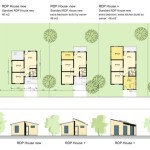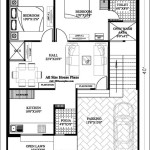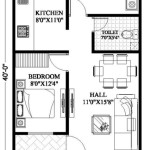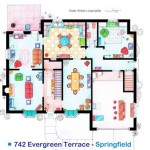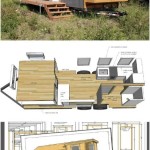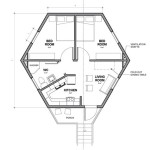Small House Plans On Slab Foundation
A slab foundation is a popular and cost-effective foundation choice for small houses. It is a single, flat concrete slab poured directly onto the ground, providing a solid base for the structure. Slab foundations are particularly well-suited for small homes due to their simplicity, affordability, and suitability for various climates and soil conditions. This article will explore the benefits of slab foundations for small houses, discuss the different types of slab foundations, and provide insights into the design considerations for small house plans on a slab foundation.
Benefits of Slab Foundations for Small Houses
There are several compelling reasons why slab foundations are ideal for small houses:
- Cost-effectiveness: Slab foundations are generally less expensive to build compared to other foundation types, such as crawl spaces or basements. This cost savings can be significant, especially for smaller homes with less square footage.
- Simplicity: Slab construction is relatively straightforward, requiring less excavation and complex framing compared to other foundation types. This simplicity translates into faster construction times and potential cost savings on labor.
- Suitability for Various Soils: Slab foundations are adaptable to various soil conditions, including those prone to expansion and contraction due to moisture changes. The concrete slab can be designed to withstand these movements without cracking or shifting.
- Energy Efficiency: Slab foundations can contribute to a home's energy efficiency. The concrete slab acts as a thermal mass, absorbing heat during the day and releasing it at night, helping to regulate indoor temperatures. This can reduce reliance on heating and cooling systems, leading to lower energy bills.
- Reduced Maintenance: Compared to other foundation types, slab foundations require less ongoing maintenance. There are no crawl spaces to inspect or vents to clean, which can save homeowners time and money in the long run.
Types of Slab Foundations
There are different types of slab foundations, each suited for specific circumstances:
- Standard Slab: This is the most common type of slab foundation. It consists of a single, flat concrete slab poured directly onto the ground with a layer of gravel for drainage.
- Insulated Slab: This type of slab foundation includes insulation layers beneath the concrete slab to improve energy efficiency and reduce heat loss through the ground. Insulation can be placed around the perimeter of the slab or throughout the entire slab area.
- Post-Tensioned Slab: This method uses high-strength steel cables to reinforce the concrete slab, increasing its load-bearing capacity. This is particularly useful for heavier structures or areas with challenging soil conditions.
- Floating Slab: A floating slab is designed to move with the ground, minimizing stress on the foundation. This is often used in areas with expansive soils that can expand and contract with moisture changes.
Design Considerations for Small House Plans on a Slab Foundation
When designing a small house plan for a slab foundation, it is essential to consider the following factors:
- Foundation Thickness: The thickness of the concrete slab will depend on the size and weight of the house, as well as the soil conditions.
- Reinforcement: Steel rebar is typically embedded within the concrete slab for added strength and durability. It is essential to select appropriate rebar size and spacing to meet the structural requirements of the house.
- Drainage: Proper drainage is crucial for preventing water from accumulating beneath the slab, which can lead to moisture problems and foundation damage. A gravel layer beneath the slab and carefully designed downspouts and gutters can help ensure adequate drainage.
- Insulation: For energy efficiency, consider incorporating insulation beneath the slab, especially in areas with extreme temperatures. Insulated slabs can help reduce heating and cooling costs and improve indoor comfort.
- Vapor Barrier: A vapor barrier should be installed beneath the slab to prevent moisture from migrating up from the ground. This is particularly important in humid climates.
- Floor Finishing: The slab foundation can be finished with various flooring materials, such as tile, wood, or laminate. The choice of flooring will depend on the design aesthetic and the desired level of insulation.
By carefully considering these factors, architects and engineers can create small house plans on slab foundations that are structurally sound, energy efficient, and aesthetically pleasing. The simplicity, affordability, and versatility of slab foundations make them an excellent choice for small houses, offering a solid and sustainable foundation for a comfortable and energy-efficient living space.

Slab Foundation House Plans Floor Drummond

House Plans With Slab Foundation

House Plans With Slab Foundation

Small 2 Story House Plans And Smart Tiny Two Level Floor

House Plans With Slab Foundation

House Plans With Slab Foundation

Cabin Plan 769 Square Feet 2 Bedrooms 1 Bathroom 6849 00140

Two Bedroom Tiny Modern House Plan 22456dr Architectural Designs Plans

Truoba Mini 623 2 Floor House Plan

Foundation Plans How To Choose The Right One Houseplans Blog Com

